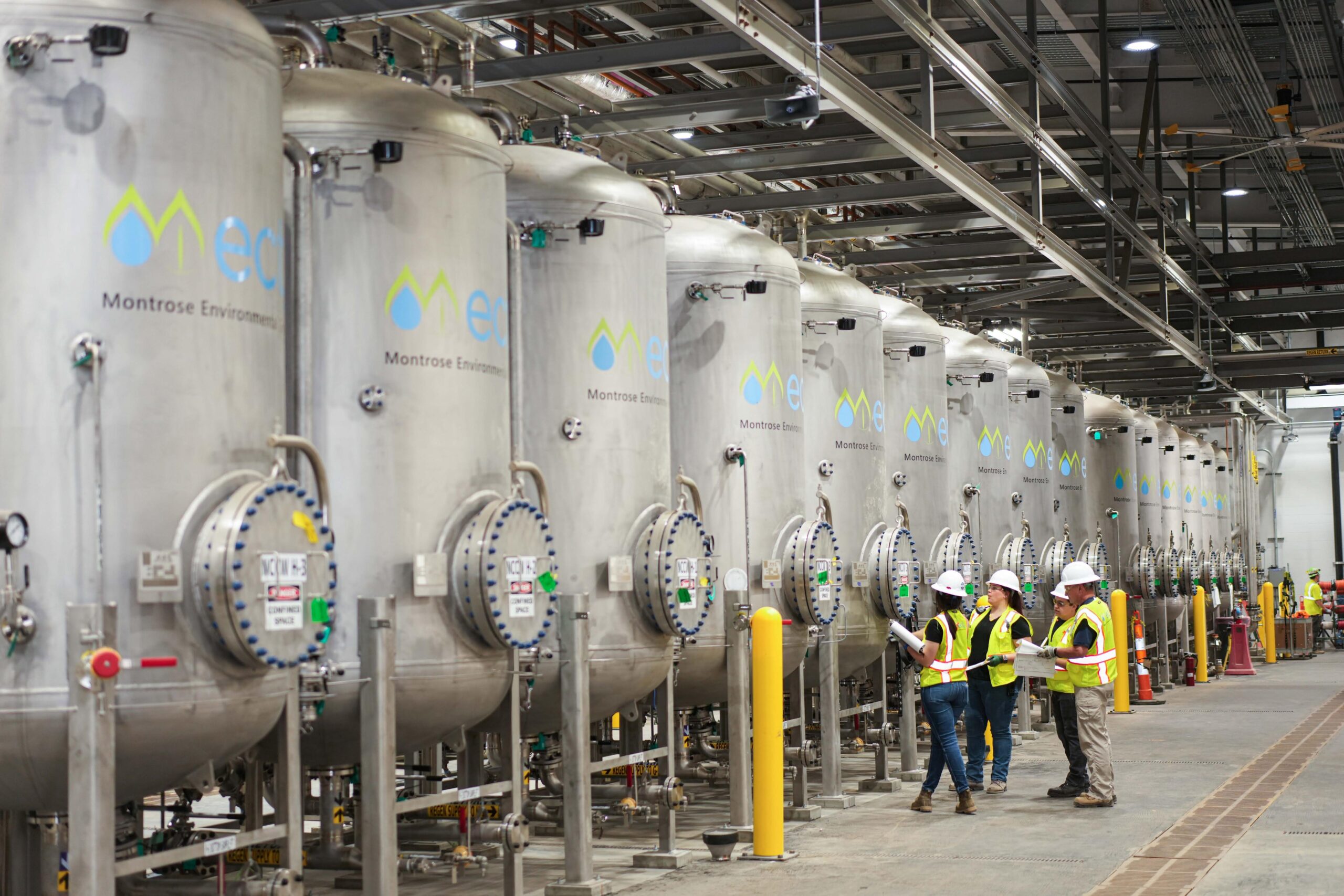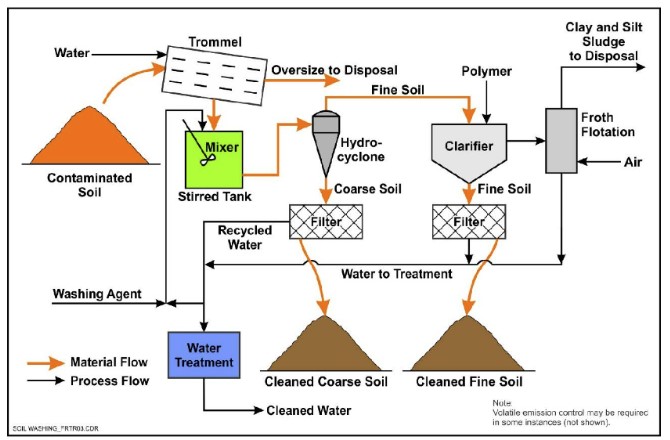PFAS Waste Management for Safer Disposal and Environmental Protection
PFAS Waste Management for Safer Disposal and Environmental Protection
Blog Article
Advanced Techniques for Efficient PFAS Contamination Elimination
The relentless obstacle of PFAS contamination demands the exploration of innovative removal approaches that can successfully address these dangerous substances. Cutting-edge innovations, such as sophisticated oxidation procedures and various adsorption techniques, have actually emerged as appealing solutions in mitigating PFAS from affected settings.
Recognizing PFAS Qualities
Although per- and polyfluoroalkyl materials (PFAS) have been widely used in various commercial and customer products due to their distinct properties, their determination in the atmosphere postures substantial challenges to public wellness and security. PFAS are a team of synthetic chemicals characterized by a carbon-fluorine bond, among the best chemical bonds known, which contributes to their remarkable security and resistance to deterioration. This security enables PFAS to accumulate in the environment and living microorganisms, bring about potential unfavorable health and wellness impacts.
The hydrophobic and oleophobic nature of PFAS makes them specifically efficient in applications such as non-stick finishes, stain-resistant fabrics, and firefighting foams. These exact same homes add to their ecological determination, as PFAS do not quickly damage down via natural processes. Furthermore, their extensive usage has actually brought about ubiquitous contamination of water sources and soils, complicating remediation efforts. Comprehending the chemical properties of PFAS is important for developing efficient methods to take care of and alleviate their ecological influence. The one-of-a-kind attributes of these substances demand a nuanced method to deal with the obstacles posed by their existence in ecosystems and potential human exposure.
Innovative Removal Technologies
The perseverance of PFAS in the environment has stimulated the advancement of ingenious remediation innovations focused on successfully eliminating these impurities from affected environments. Among the most appealing methods are sophisticated oxidation processes (AOPs), which make use of powerful oxidants to damage down PFAS substances into much less damaging compounds. AOPs can be customized to target particular PFAS structures, enhancing their effectiveness.
One more emerging innovation is making use of adsorption media, such as triggered carbon and ion exchange resins, which can uniquely catch PFAS from infected water. These materials have revealed substantial removal efficiencies, although periodic substitute and regeneration are needed to preserve efficiency.
Membrane purification strategies, including reverse osmosis and nanofiltration, are also acquiring grip in PFAS remediation. These techniques can properly separate PFAS from water, providing a sensible service for dealing with infected sources. Furthermore, thermal therapy methods, such as incineration, can decay PFAS into safe by-products, though they need careful management to control exhausts.
Collectively, these cutting-edge remediation modern technologies stand for considerable developments in the continuous battle against PFAS contamination, offering numerous techniques to restore affected atmospheres and protect public wellness.

Bioremediation Techniques
Bioremediation strategies provide a promising strategy to dealing with PFAS contamination by using the natural capabilities of bacteria to break down these persistent substances (m270 waste management). This approach includes using bacteria, fungi, and various other microbes that can metabolize or transform PFAS substances into much less unsafe results
Current developments in molecular biology and environmental microbiology have boosted our understanding of microbial neighborhoods and their potential roles in PFAS destruction. Scientists are actively discovering details stress of microorganisms, such as Pseudomonas and Bacillus, which have actually shown the ability to break down certain PFAS compounds.
In situ bioremediation methods, where bacteria are boosted straight in contaminated settings, can be specifically reliable. This strategy commonly involves the application of nutrients or electron benefactors to promote microbial development and activity. Furthermore, ex situ techniques, such as bioreactors, permit for regulated conditions that can optimize degradation prices.
Regardless of the assurance of bioremediation, obstacles continue to be, including the complex nature of PFAS compounds and the requirement for considerable area screening - m270 waste management. Proceeded research and development will be vital to refine these techniques and assess their efficiency in diverse environmental contexts
Adsorption and Filtering Techniques
Resolving PFAS contamination typically involves employing adsorption and filtering approaches, which are designed to eliminate these relentless chemicals from water and dirt. Among the different techniques, turned on carbon adsorption is extensively made use of as a result of he has a good point its high area and porosity, making it possible for reliable capturing of PFAS particles. Granular triggered carbon (GAC) systems are especially favored for treating large quantities of infected water, while powdered triggered carbon (SPECIAL-INTEREST GROUP) can be utilized for smaller-scale applications.
Ion exchange resins also show assurance in PFAS elimination, operating by exchanging PFAS ions with less damaging ions in the water. This method has actually shown effectiveness in concentrating PFAS substances, facilitating their subsequent elimination. Furthermore, membrane filtration strategies, such as reverse osmosis and nanofiltration, run by utilizing semi-permeable membranes to different PFAS from water, successfully minimizing their concentrations.
While these methods are reliable, they have to be thoroughly selected based upon the particular PFAS substances existing and the ecological context. Continuous innovations in materials scientific research and design are causing the growth of novel adsorbents and filtering systems that enhance elimination effectiveness and reduce functional prices, consequently boosting general removal efforts.
Regulatory and Policy Factors To Consider
Exactly how can reliable regulatory structures enhance the administration of PFAS contamination? Comprehensive policies are necessary to make certain a collaborated and durable response to the difficulties posed by per- and polyfluoroalkyl compounds (PFAS) Rules can establish clear standards for tracking, reporting, and remediating PFAS-contaminated websites, fostering responsibility amongst sectors and public entities. (m270 waste management)

On top of that, economic incentives and grants can be integrated right into plans to encourage the adoption of sophisticated removal technologies. Policymakers ought to likewise focus on r & d, guaranteeing that emerging approaches for PFAS removal are confirmed and implemented properly.
Furthermore, public awareness and interaction are crucial parts of any type of regulatory strategy, equipping neighborhoods to advocate for their wellness and security. Ultimately, a well-structured get redirected here governing setting will not only boost the management of PFAS contamination yet also advertise lasting techniques that shield future generations.
Verdict
In recap, the intricacy of PFAS contamination necessitates the fostering of sophisticated removal techniques. Proceeded research study and development in this investigate this site area remain critical to resolving the difficulties posed by PFAS contamination.
Report this page